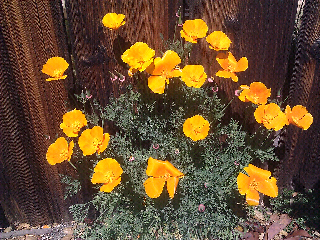One of our most popular plants is the Azadirachta indica aka real Neem plant. Neem is an attractive broad-leaved evergreen that can grow up
to 100 feet tall and their canopies can reach as much as 30 feet wide. This incredible tree has the capabilities of
controlling most pests, being
used as an antiseptic as in India where
people brush their teeth
with twigs of it and use it as a chew-stick as well as
in toothpaste.
Neem
extracts prevent tooth decay,
prevent
and heal inflammations of the gums and are also
anti-viral and
anti-fungal. I can go on and on. You can find more detailed information on our
eBay post here or grab this awesome book (
Neem: A Tree for Solving Global Problems) for a nice thorough introduction to Neem.
Here are some of the questions we have been asked concerning Neem:
1. Is Neem related to medicinal Cannabis?
Interesting question since many believe the leaves look very similar as well as both plants having medicinal properties
, but the
answer is absolutely not. Cannabis from the Cannabaceae family is more closely related to roses, strawberries, apples and cherries in the Rosaceae (Rose family) than to Neem. Both of these families branch out from the higher Order 'Rosales'. The scientific classification of plants used today come from the famous Carl Linnaeus and usually starts from Kingdom, which would be Plantae aka Plants, (sometimes Subkingdom, Superdivision are then listed) then Division/Phylum, Class, (sometimes a Subclass will follow), then Order, Family, Genus and lastly species, but general usage you'll hear starts at the 'Family' down to species level depending on detail needed and of course who you are talking to. Cannabis would be classified as Rosales (Order), Cannabaceae (Family), Cannabis (Genus), then sativa, indica or ruderalis would be the species types. Neem on the other hand would be listed as Sapindales (Order), Meliaceae (Family), Azadirachta (Genus), indica (species). The species is always written in lowercase letters. The Meliaceae family is the Mahogany family, yes the big ole' trees you're thinking about, so really no comparison to the above mentioned Cannabaceae family of plants.
2. How often do I need to water Neem plants?
All plants have their preferences. Some are very sensitive to moisture or becoming dry. There are also many details that go into how much watering is needed like size of the plant, its environment and how much sun, heat, wind etc. When neem plants are young they are a bit sensitive to too much moisture, so it is best to keep them on the dry side. After you see the stem start to get woody and brown it will tolerate more moisture. Regardless, it is important that when you water, you water thoroughly and that it freely flows out of the bottom of its container or through the soil/ground. You should not see a puddle remaining. That means you need to loosen your soil by possibly adding rocks, sand, gravel, pieces of bark, perlite, etc. Neem is very drought tolerant so it can withstand being dry, so it is best again to keep them on the dry side than over water. The more sun, wind, heat and faster growth will require more watering. If your plant gets cold temperatures and/or more shade it may slow down its growth rate and not soak up much water, nor will water evaporate easily so again less watering would be needed. One thing I say is that when you care about your plants you will notice changes in the way they look, which will give you clues as to specific needs maybe because its environment has changed or maybe it has contracted some root, leaf disease or is being attacked by pests or other factors. Keep your plants healthy and they will be less susceptible to these issues.
3. How much sun do Neem plants require?
This question goes along the lines of the previous watering question. Most neem plants do not get much sun when they are young in the wild since their parent trees provide so much shade, so at first not much sun is required, but we have been successful giving young neem plants up to 4 hours of direct sun until they harden, brown and become more woody. At this point they will tolerate much more sun, but again keep an eye out for temperature and how much soil and water they are in. All these factors play a role in the health of your plants. You can also give your plants artificial light from 'Day light', 'Natural', or 'Full spectrum' fluorescent bulbs, but remember that there is nothing like good ole' natural sunlight!
Enjoy and feel free to continue sending your comments and/or questions and we will reply to you and your specific situation directly.

































































































